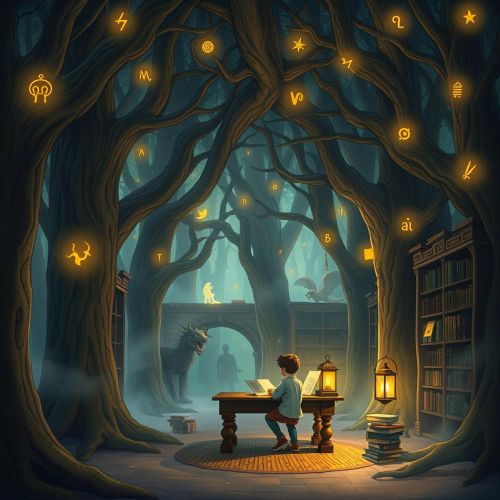What Students Can Learn From Studying Urban Legends
Urban legends are modern myths – stories passed along through word of mouth or social media that often blur the lines between fact and fiction. They are the whispers of society, reflecting collective fears, anxieties, and cultural trends. While these tales might seem like mere gossip or entertainment, they hold valuable lessons for students, offering insights into human nature, culture, history, and critical thinking. Here’s a look at what students can learn from studying urban legends:
1. Enhancing Critical Thinking and Analytical Skills
Studying urban legends offers learners a unique opportunity to enhance their critical thinking and analytical skills. When young people analyze these myths, they are encouraged to question their validity, investigate their origins, and distinguish fact from fiction. This process sharpens their ability to evaluate evidence and think independently – skills that are crucial for academic success. However, some students may find themselves feeling overwhelmed by the demands of their writing papers and consider searching online with phrases “pay someone to write my assignment” to find top writers who can handle the workload. While this might seem like a quick fix, it’s important to remember that relying on others to complete your tasks can limit your opportunities to develop essential skills like critical thinking, problem-solving, and independent research. Instead of outsourcing your work, engaging with the material yourself – such as analyzing the themes in urban legends – will help you strengthen your ability to evaluate evidence, think critically, and write effectively, all of which are valuable skills for your academic and professional future.
2. Cultural Insights and Social Values
Urban legends are not just random tales; they often reflect the cultural values and societal fears of the time in which they arise. For example, many urban legends revolve around themes of danger, trust, and technology, revealing society’s concerns about topics like safety, privacy, and the consequences of new inventions. By examining these stories, students can gain insight into the cultural and social climate of different periods in history, as well as how society’s values and fears change over time.
3. Psychology of Belief and Groupthink
Why do people believe in urban legends? Why do certain stories catch on while others fade into obscurity? Studying urban legends helps students understand the psychology behind belief, rumor, and groupthink. They learn about cognitive biases, such as the availability heuristic (where people believe something is true simply because it’s easily recalled) and confirmation bias (where people accept information that aligns with their preexisting beliefs). This knowledge can help students become more self-aware of their own biases and influence, especially when navigating social media or public discourse.
4. The Role of Media in Shaping Myths
Urban legends have long been a form of media – whether told face-to-face, passed through letters, or circulated in news stories. Today, they spread rapidly through the internet, social media, and viral videos. By studying how urban legends adapt to new forms of media, students gain a deeper understanding of how information is disseminated in modern society. They can also learn about the role media plays in shaping narratives and influencing public perception, a valuable skill in today’s media-saturated environment.
5. The Evolution of a Story: Fact vs. Fiction
Many urban legends start with a kernel of truth, but as they are retold, they become more exaggerated or distorted. Students can investigate how certain urban legends evolved over time, separating fact from fiction and considering how details were added or altered. This analysis teaches students about historical accuracy, the importance of verifying sources, and the fluid nature of storytelling. It’s an excellent exercise in research and investigation, encouraging students to trace the origins of a story and determine its authenticity.
6. The Importance of Community and Connection
Urban legends often thrive in close-knit communities, where people share common experiences or beliefs. They reflect the way in which stories can bond people together through shared knowledge or collective fears. Studying these stories encourages students to think about the role of community in shaping narratives and culture. They also learn how stories can spread across different groups and how they adapt based on different societal contexts or experiences.
7. Examining Moral Lessons and Social Norms
Urban legends often serve as cautionary tales, warning about the consequences of risky behaviors or breaking societal norms. Many of these legends involve characters who make poor decisions, leading to dire outcomes, whether it’s a prank gone wrong, a dangerous adventure, or a violation of personal safety. By analyzing these stories, students can reflect on moral lessons and the role of societal norms in shaping behavior. These lessons can be applied in real-life situations, encouraging ethical decision-making and a stronger sense of personal responsibility.
8. The Influence of Fear and the Unknown
Many urban legends tap into our primal fears – fear of the unknown, fear of danger, or fear of the supernatural. By studying these legends, students can learn about how fear operates on a psychological level and why certain stories are more likely to provoke anxiety or intrigue. This understanding can be valuable when exploring topics in psychology, sociology, and even literature, helping students better understand how fear is used as a tool in storytelling.
9. Cross-Cultural Comparisons
Urban legends are found across the globe, each culture adding its unique twist to common themes. By comparing urban legends from different countries and cultures, students can explore how universal certain fears and narratives are. For example, many cultures have their own versions of the “vanishing hitchhiker” legend or the “killer in the backseat” tale. This provides an opportunity to discuss the similarities and differences in folklore, helping students understand cultural exchange and the shared aspects of human experience.
Conclusion
Urban legends are more than just entertaining stories – they are windows into human culture, psychology, and society. For students, studying these legends offers a rich learning experience that fosters creativity, critical thinking, cultural awareness, and an understanding of the power of storytelling. Whether they’re analyzing the evolution of a popular myth or learning to spot misinformation, students can gain valuable insights from exploring the world of urban legends.
No posts were found.










Business Law Assignment Help
I’ve been struggling to understand all the principles and cases in my law course, and tackling complex topics like contracts and corporate regulations has been overwhelming. I wish I had access to reliable guidance because preparing assignments alone takes so much time and leaves me confused. That’s why I started looking for Business Law Assignment Help which really clarified concepts and offered step-by-step support, making it easier for students like me to complete tasks accurately and confidently.